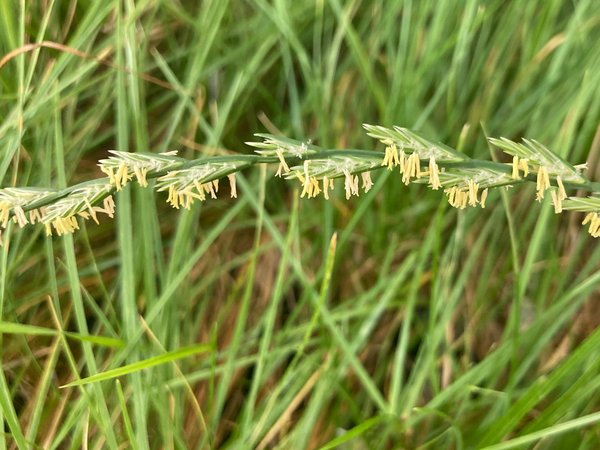 Read this article in French
Read this article in French- Share this article
- Subscribe to our newsletter
How grasses avoid inbreeding
Corn, rice, wheat, sugar cane – the grass family contains a number of species that are important food sources for humans and have been bred and cultivated for millennia. Wild and farm animals, too, depend heavily on grasses for feed.
However, breeding grasses is difficult by nature. Like many other flowering plants, grasses have evolved a mechanism that prevents inbreeding after self-pollination. Experts call this mechanism 'self-incompatibility'. It ensures that no pollen from the plant itself or from closely related individuals can grow towards the ovary and fertilise the egg cell. This prevents inbreeding, with all its consequences.
For plant breeding, self-incompatibility can be a disadvantage. It not only complicates the development of homozygous lines but can also affect the pollination of two closely related individuals. This makes it more difficult to achieve breeding progress for desired plant characteristics by crossbreeding. To be able to exploit different plant breeding strategies, precise knowledge of self-incompatibility is essential.
Self-incompatibility genes in grasses decoded for the first time
To date, little is known about the genetic composition of self-incompatibility in grasses. In the 1960s, plant scientists discovered that self-incompatibility is controlled by two separate genome regions (loci). But with the methods available at the time, the researchers could not determine which genes are actually involved.
Now, for the first time, researchers led by Bruno Studer, Professor of Molecular Plant Breeding at ETH Zürich, have been able to identify the genes responsible for self-incompatibility and to determine their nucleic acid sequence. They did this in perennial ryegrass (Lolium perenne L.), one of the most important forage and turf grass species in the world.
Studer has devoted over 15 years to this subject, together with collaborators from Denmark, Wales and the USA. In 2006, he found genes that reduce the seed yield in forage grasses. He was looking for the opposite: genes that increase seed yield. The genes he identified later turned out to play a role in self-incompatibility. In 2017, Studer and his team narrowed the two loci down to a few potential candidate genes. Now they have delivered a precise description of the three genes that effectively make up the loci and control self-incompatibility.
These findings are opening up new breeding possibilities not only for forage grasses but also for important, self-pollinating grass crops for human consumption such as rice or barley. If the genes for self-incompatibility are known, they can be manipulated in specific ways. Switching them off makes it possible to develop inbreed lines.
Another approach is to insert the genes into the genome of grasses that have lost their self-incompatibility so as to breed genetically diverse populations. For Studer, one thing is clear: “Knowledge of these genes has given us an important foundation for controlling this mechanism and using it for breeding.”
Interplay of two distant loci
Essentially, self-incompatibility is based on the interplay of the two loci – the S locus and the Z locus – which are located on different chromosomes.
The genes are the blueprint for three different proteins, which form a kind of lock-and-key mechanism that recognises whether the pollen which has landed on the stigma is genetically similar or unrelated. This sets off a signal that either aborts the fertilisation process or continues it to completion.
Studer and his team are currently studying the structures of these proteins and how they interact to differentiate between foreign pollen and the plant’s own pollen. For this, they use special artificial intelligence methods to model the structure of the corresponding proteins based on the gene sequence, along with models that predict the interactions between these molecules.
(ETH/wi)
Reference
More information:
Read full article on ETH website





Add a comment
Be the First to Comment